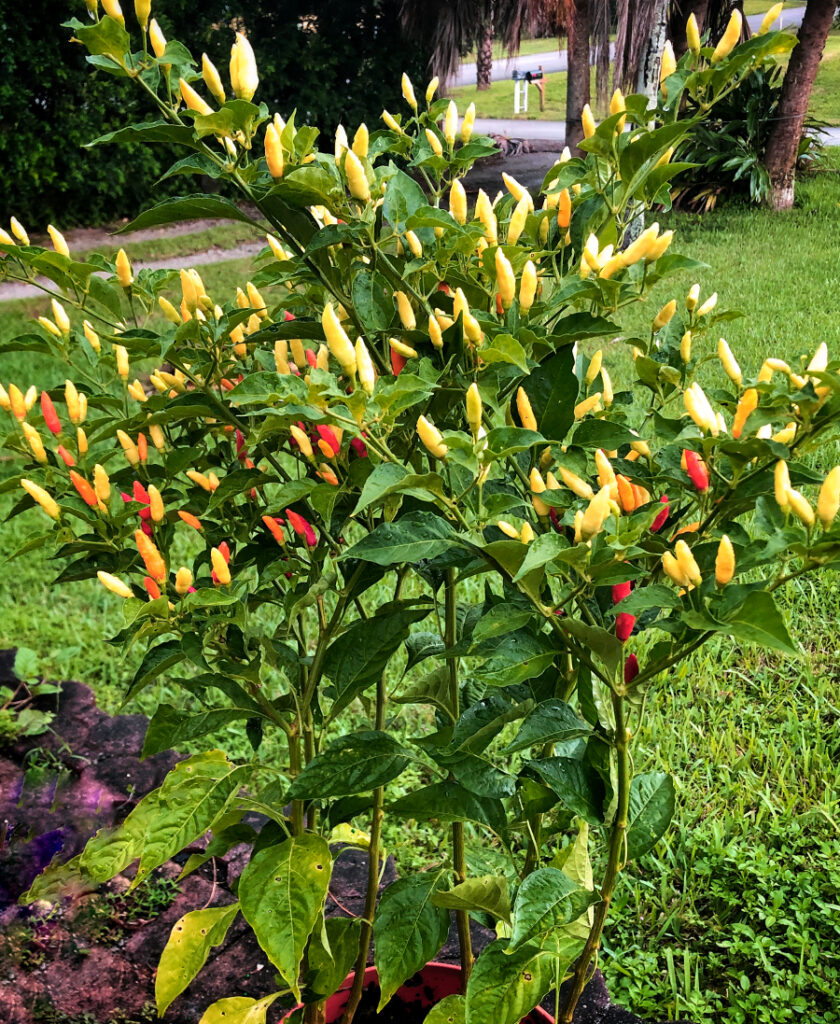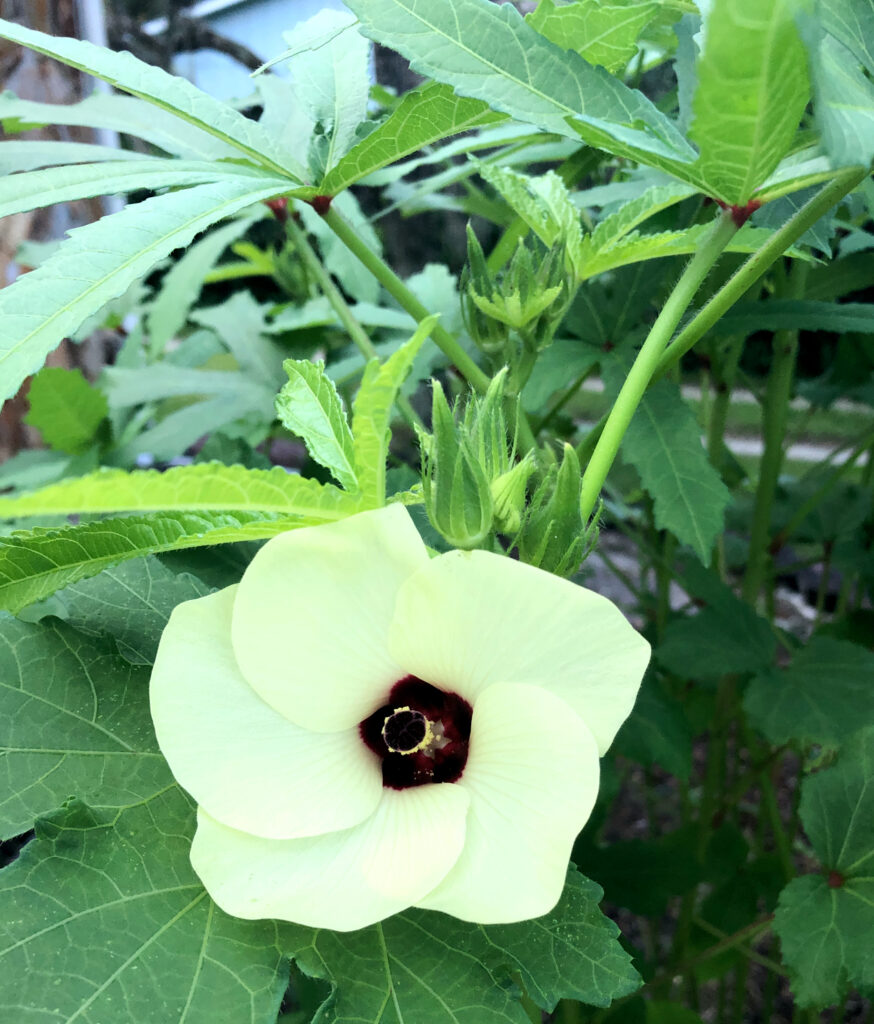The hot and dry weather is taking a toll on landscapes and vegetable gardens. There may be signs of heat stress in the lawn and landscape beds and drought in others. Plants can get hot. Not all wilted plants need water; some wilt just from the heat. If the plant is a winter annual such as impatiens, remove it. Replacement plants can serve two purposes, beatification and feeding the family. Let’s look at four veggies for the landscape that take the heat.

The trend of adding edible plants to the landscape has been with us for a while. But when the weather is intense, a few heat-tolerant veggies in the landscape will spruce up the area and provide for the table without much work.
Here are four vegetables for tucking in and around landscape plants that can withstand heat and droughty conditions. Put a few in containers, in front of shrubs, and in empty or suffering flower beds. They are worth the effort in the late summer.
Hot peppers are among my favorite summer plants. They soak up the heat, grow lickety-split and produce colorful peppers just right for topping a taco or making pepper jelly. A member of the large Nightshade family, peppers are upright shrubs and annuals or short-lived perennials. They have lush, green foliage and lovely fruits. Plant peppers in full sun and well-draining soil. They will tolerate a bit of shade, but more light equals more peppers. Plant peppers from seed or transplant and expect colorful, harvestable fruit 60 to 90 days after planting. Plant hot peppers in containers or beds in the landscape as an accent or by themselves.
Purslane is grown as a flowering landscape plant and eaten, although the varieties are different. Vegetable purslane has small, yellow-orange flowers at the ends of the stems. Also known as fatweed, this is a summer annual with fleshy, plump leaves and stems. It grows close to the ground from a taproot. Harvest leaves and stems for salads and use as a potherb. Grow this plant from seed from plants not treated with pesticides. Use it as a garden border and a hanging plant from containers.
Okra is one of the great veggies for South Florida summer gardens. It is a tropical plant originally from Africa. Most okra varieties require 75 to 85 days to grow from seed to harvesting pods. Okra requires full sun, well-drained soil, and warm days and nights for pod production. Irrigate and fertilize okra regularly for best growth, flower, and fruit production. Harvest pods young for best taste and tenderness. Plant okra as a background plant in containers and behind shrubs. Dwarf varieties are fabulous as a low-growing shrub replacement.

An easy vegetable to grow successfully, Southern peas, AKA cowpeas, are bushy annuals, erect or vining and spreading. The leaves are trifoliate (three-leaved) and can be green or purple, depending on the variety. The flowers are typical of peas or beans, are produced in loose clusters on short stalks among the foliage, and can be white, pink, or lavender. Plant the seeds in full sun and plan to support the plants. Try a garden tee-pee covered in the vines for kids to play in and effortlessly harvest peas.
Plant a few heat-loving veggies to pretty up the landscape and enjoy the taste of summer.
This column first appeared in the Treasure Coast Newspapers.
Leave a Reply